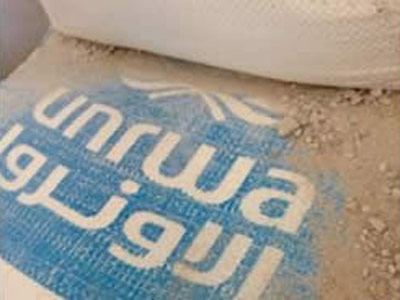Cement delivered to the Gaza Strip used to build tunnels
-
-
8/12/2014
GovXShortDescription
Hamas made wide use of the cement that reached the Gaza Strip to rebuild its military infrastructure and to construct new military-terrorist facilities, including the extensive system of attack tunnels exposed during Operation Protective Edge.
-
-

 Sacks of UNRWA building materials found by IDF during Operation Protective Edge, used to build tunnels, July 29, 2014
Copyright: IDF Spokesperson
Sacks of UNRWA building materials found by IDF during Operation Protective Edge, used to build tunnels, July 29, 2014
Copyright: IDF Spokesperson
|
GovXContentSection
Source: ITIC
Cement was needed by Hamas in the Gaza Strip and the Gazan civilian population after Operation Cast Lead to build new buildings and rebuild those that had been damaged during the operation. However, Hamas made wide use of the cement that reached the Gaza Strip or was manufactured there to rebuild its military infrastructure and to construct new military-terrorist facilities.
A significant amount of the cement was allotted to building the extensive system of attack tunnels exposed during Operation Protective Edge, smuggling tunnels, and defensive tunnels under Gaza's urban landscape. The cement was also used to construct posts and facilities for weapons storage, military training and rocket launching.
Allotting the cement to military purposes at the expense of Gazan civilian needs was part of Hamas' strategic concept of giving priority to rebuilding and upgrading its military capabilities. Khaled Mashaal, head of Hamas' political bureau, admitted as much at an Arab conference held in Damascus. In November 2009 he said that "Outwardly the visible picture is talks about reconciliation...and construction; however, the hidden picture is that most of the money and effort is invested in the resistance and military preparations..."
Given the limitations Israel placed on delivering cement into the Gaza Strip, in the years since Operation Cast Lead Hamas has used a variety of methods to acquire it to meet its military-terrorist needs. The most common method was smuggling large quantities in through the tunnels under the Egypt-Gaza Strip border. Other methods included manufacturing it themselves in factories in the Gaza Strip working under Hamas supervision; using building materials taken from the ruins of the Israeli settlements destroyed after Israel's unilateral withdrawal from the Gaza Strip in 2005; and the commandeering of cement delivered into the Gaza Strip from international aid organizations or brought in by aid convoys.
-
-
-
-
-
-
-
-
-
-
-
-
-
-
-
-
-
-
-